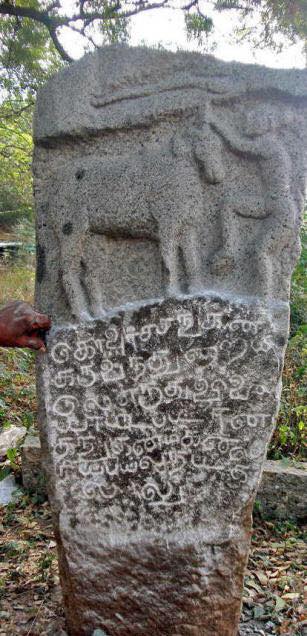Jallikattu – its historical and cultural relevance
Jalli in Jallikattu means gold coins tied to the bulls’ horns. Kettu means to tie.
Brave matadors were eligible bachelors in the olden days. This is the reason why men used to display dare devilry.
The Spanish bullfighting is a mostly a cowardly version, where the bull has a ZILCH chance. In Jalikattu, the bull does NOT die, nor is it injured.
The Supreme Court has imposed a blanket ban on all traditional cultural practices and rural sports all over India, that involved ‘bulls’, including Jallikattu, Manjuvirattu, Vadam, Eruthukattum Thiruvizha, Rekla and Bullock-cart races of Tamilnadu, Sethali, Kaalapoottu in Kerala, Bailgada in Maharashtra and bullock-cart races all over India.
In one sweeping order, the Supreme Court has brought to an end thousands of years of evolution of the Indian Native Cattle, the farmer’s best friend ever since it was domesticated by man. We should understand that these breeds have evolved according to the terrain, climate, locally available feed, and have co-existed peacefully with humans who reared them and took care of them as his/her own kin. The cattle, in return, helped man with his farm work, providing the much-required muscle power, and dung, urine.
This is a special relationship that every farmer understands, which, unfortunately, the Supreme Court seems have no clue of, even after a decade after the Jallikattu case entered the Supreme Court.
One of the observations made by the Supreme Court was that Jallikattu is an ‘entertainment sport’ and ‘why should you not play a video game of Jallikattu?
Is Jallikattu a mere entertainment sport? Jallikattu is NOT an entertainment sport and cannot be conducted for entertainment. A Jallikattu can be organised only once a year in a village and that too ONLY during the annual village temple festival. It is organised by the Village Temple Committee and not by any sports/entertainment club. There are no tournaments for Jallikattu. Unlike other sports that are organised for entertainment, there is no first place, second place winner. For each and every bull that enters the arena, either the sportsman is declared the winner if he successfully embraces the bull or the bull is declared the winner. Jallikattu is no sport at all; it is a cattle-show to showcase the magnificence of the village stud bulls.
Although Jallikattu is widely known only as a bull-embracing sport, it is actually an ancient cattle show and a stage for the village youth to demonstrate their valour, all rolled into one. In fact, it is an exemplary example of ancient Indian wisdom of cattle breeding science, branding and marketing.
Jallikattu involves selection of the best of the breed, improvement of cattle breeds, cattle shows, creating a brand value for the cattle of the village/region and then marketing the same, thus commanding high prices for their produce (cattle). This exceptional system developed by Tamils thousands of years ago is still in vogue in Tamilnadu. It has continued non-stop even under Muslim rulers and the British Raj, except during times of great famine and epidemics like plague when the people voluntarily suspended it.
To understand how Jallikattu is a part and parcel of Hindu Religion, we should understand the ancient ‘Temple Bull System’ which is still in vogue in Tamilnadu.
The Temple bull is not restrained in any manner. It is allowed to roam around the village and does not even have a nose rope. It has the right to walk into any field and graze. People believed that if the temple bull grazes from one’s farm, then that family would have a bountiful harvest. If the temple bull visits one’s house seeking water or feed, then that household would receive some good news etc. The whole village pampers the temple bull; its only task is to provide free stud service to the village cows.
Jallikattu is all about an unarmed man embracing the bull by its hump for a maximum of 30 seconds! And that is all there is to it. Just 30 seconds of embracing the bull by its hump.
For a bull, an unarmed human is like a pin in a bowling game. Yet the bull does not chase a sportsman down and attack him. Not a single fatality has been recorded in the Jallikattu arena post – 2009.
Jallikattu has been a part and parcel of the Hindu traditional practices of Tamils for thousands of years. It is conducted as a thanks-giving to the local village deity to which the village bulls are betrothed. The occasion is used to honour bulls belonging to the temple and the village.
If you travel around Tamilnadu, you can see statues of Jallikattu bulls and Temple bulls, erected inside temples. Pujas are performed for the bulls along with the puja for the deity. In fact, the statues of the Temple bulls sport the real horn of the bull. The temple bull services the village cows during its youth and when it is old, the village lovingly cares for the bull till its last breath. When a temple or Jallikattu bull passes away, it is given a grand ceremonial burial after performing its last rites similar to that of the village head. It is usually buried in the temple grounds or farm of the owner. After one year, the horns are exhumed and placed on the statue built in the village Temple. The Temple bull is considered sacred during its lifetime and considered as a village Guardian God (grama devata) after its death. Daily pujas are conducted for the Temple bull statue along with the puja for the deity.
For Tamils, Jallikattu is a symbol of the wisdom of their civilization; an inseparable part of their culture.
Tamils would not give up their traditional practice of Jallikattu.
This article was originally published on Rare Book Society of India by Sparsh Sharma.








